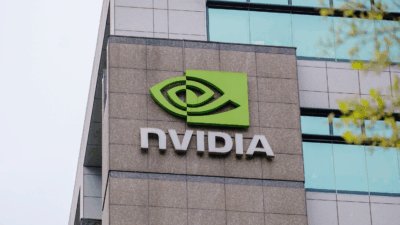Microsoft Will Pay Semafor to Use AI for News Reports
The deal could widen the technology’s use in news-gathering, while also heading off future copyright lawsuits.
Sign up for smart news, insights, and analysis on the biggest financial stories of the day.
Microsoft is cultivating its ties to the news business the old-fashioned way.
The Financial Times reported Monday that Semafor, the digital news startup with a distinct grownup-in-the-room brand, has struck a deal to have Microsoft (OpenAI’s biggest investor) sponsor a new part of Semafor’s news operation called “Signals,” which will draw on Microsoft’s AI chatbot to help journalists write the news.
Generative AI’s Spotlight
Since generative AI busted onto the scene, tech platforms’ relationship with the news media has become even more strained. Not only are legacy news operations worried that generative AI search engines could effectively break their paywalls, they’re also annoyed that their articles have been used to train the large language models powering the bots. The New York Times sued OpenAI for this reason, although OpenAI CEO Sam Altman replied acidly: like we even need your content anyway.
This new deal between Microsoft and Semafor represents the AI industry’s more honeyed approach, paying a news organization to use its tools is clearly a marketing decision rather than a long-term business strategy. “I would assume that this is part of a broader effort to strike deals and disincentivize publishers to go after technology giants for copyright violations,” Felix Simon, a researcher at the Oxford Internet Institute specializing in AI and the media, told The Daily Upside. “Getting a well-known outlet like Semafor on board for a ‘substantial’ sum might create incentives for others to strike deals, too: ‘Get them while they are hot,’ so to speak.” But what exactly is Semafor getting, besides cash? Per the FT, the idea is to use Microsoft’s AI to help create a breaking news feed that will carry around 12 stories per day:
- A use case given to the FT was that the AI could be used to scan news media from around the world, summarizing the response of Russian, Chinese, or Indian news media to a particular event, for example. Exactly how much cultural or common sense the AI will display when taking the pulse of various nations remains to be seen.
- Simon added the deal will have other benefits for Semafor. “The economic landscape for news organizations and news startups isn’t exactly rosy. This flagship deal not only seems to provide a new source of revenue for Semafor but also puts it more squarely on the map against competitors such as Axios and Politico, given the attention this will attract,” he said.
Dealing With Data: Speaking of Big Tech companies re-jigging their relationships with the media, there’s a quiet but monumental shift going on in the digital advertising world as Google has decided to kill off “cookies,” tiny files that websites place on your computer to store information about you and what you like. Cookies have been a big, if sugarless, part of the online advertising ecosystem for some time, so their absence leaves a vacuum. In response to the great cookie crumbling, vacuum-abhorring Amazon has struck a deal with the UK’s largest publisher Reach to extract first-party data from its readers.












